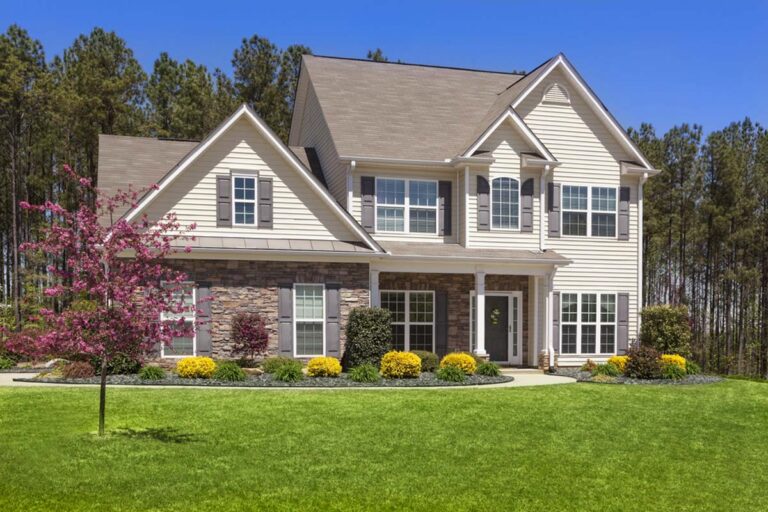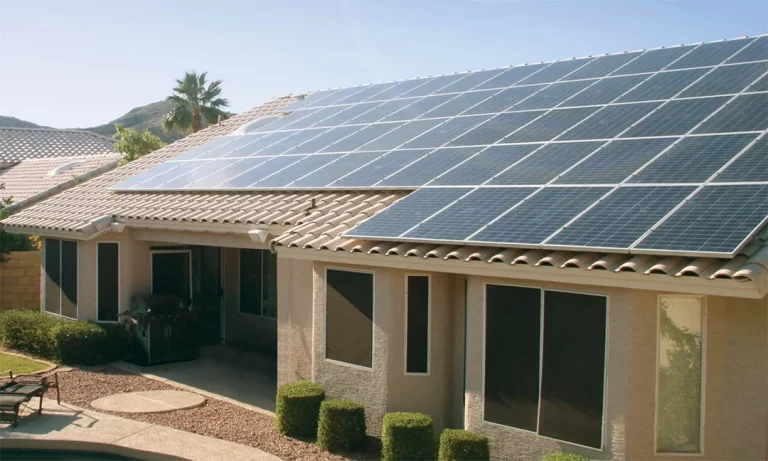Understanding Zoning Laws: A Homeowner’s Guide to Building Regulations
As a homeowner, you’ll find zoning laws essential for determining how you can use your property. These regulations guarantee neighborhood safety and community development by segregating land into residential, commercial, and industrial uses. Before you engage in buying property or starting renovations, check your local zoning classifications—from single-family zones (R-1) to mixed-use areas (R-4). You’ll also navigate setback requirements, which dictate how far your structure needs to be from property lines, enhancing safety and preserving property values. In addition, understanding how to properly apply for building permits can save you from potential legal headaches. This grasp on regulations will set you up for informed decisions about your property.
What Are Zoning Laws?
Zoning laws are regulations that dictate how land in specific areas can be used. These laws aim to segregate residential, commercial, and industrial areas, guaranteeing that your neighborhood remains safe and enjoyable. For instance, you won’t suddenly find a noisy factory next to your quiet home, thanks to these rules.
As a homeowner, you’re likely most concerned with residential zoning, which controls not only the types of buildings allowed but also their sizes, placement on the lot, and the height. These regulations guarantee that your community maintains a uniform appearance and protects property values.
It’s vital you understand local zoning laws before you buy property or plan any major renovations. Ignoring these can lead to legal troubles and costly penalties. If you’re planning to build or modify your home, check with your local planning department first. They’ll provide the specific zoning classification for your property and outline what is and isn’t allowed.
Understanding these laws helps you make informed decisions, guaranteeing that your home improvements are both safe and legal. Always remember, zoning laws are there to protect you and your community, keeping it a desirable place to live.
Types of Zoning Classifications
You’ll encounter various zoning classifications when exploring local regulations, each designed to meet specific urban, suburban, or rural needs. These classifications help guarantee that land use is optimized for safety and efficiency, promoting orderly development within communities.
One common type is commercial zoning, which is essential for business operations. This designation allows for the development of shopping centers, office buildings, and entertainment facilities, which are important for economic growth but are placed strategically to reduce potential disruptions to residential areas.
Industrial zoning is another category, focusing on areas suitable for manufacturing, warehousing, and distribution. Such zones are typically located away from residential neighborhoods to minimize noise, traffic, and environmental impacts, safeguarding the quality of life for nearby residents.
Agricultural zoning protects and promotes farming activities, helping to preserve open space and natural resources. This type guarantees that agricultural lands are used primarily for farming rather than being fragmented by incompatible uses, which could jeopardize food security and environmental health.
Each zoning type plays a significant role in shaping the built environment, directing growth, and protecting community welfare. Understanding these distinctions helps you navigate the planning landscape effectively, guaranteeing that development aligns with both personal and community goals.
Understanding Residential Zoning
Residential zoning is vital as it dictates how land within neighborhoods can be used. The regulations set forth in these zones guarantee that your community remains safe, orderly, and pleasant for all residents. As a homeowner, it’s important you’re familiar with these rules to make informed decisions about your property.
Here’s a quick guide to some common residential zoning classifications:
| Zoning Type | Description |
|---|---|
| R-1 | Single-family homes only, ensuring a uniform and quiet neighborhood environment. |
| R-2 | Allows duplexes, promoting a slightly denser community while still maintaining a residential character. |
| R-3 | Multi-family residential, such as apartment buildings, facilitating higher population density but with controlled development. |
| R-4 | Mixed residential, permitting both houses and small businesses, supporting convenience but retaining a residential feel. |
Understanding these classifications helps you visualize potential changes in your area and assess safety measures effectively. For example, knowing that your zone is R-1 can reassure you about the stability and low traffic in your neighborhood, enhancing your sense of security. Always check with local zoning authorities to confirm specific regulations and any potential plans for zoning changes that might affect your property’s value and safety.
The Importance of Setback Requirements
Setback requirements play an important role in maintaining the character and safety of your neighborhood. These rules determine how far your structure must be from property lines, roads, and other structures, guaranteeing there’s enough room for emergency services, like fire trucks, to maneuver in case of an emergency. They also provide sufficient space for natural light and ventilation, which are vital for your well-being and that of your neighbors.
You’ll find that these setbacks vary depending on your zoning district. Residential areas often have different requirements from commercial zones, reflecting the differing needs and densities of these environments. It’s essential you’re aware of these specifics to avoid legal complications and potential fines.
Adhering to setback requirements not only enhances safety but also preserves the aesthetic and economic value of your community. By preventing overcrowding, they help maintain property values and make sure that your neighborhood remains attractive and desirable.
How to Obtain a Building Permit
Before you start construction, it’s essential to secure a building permit. This document guarantees your project adheres to local safety codes and regulations, providing peace of mind that your structure will be both safe and legal.
First, you’ll need to prepare detailed plans of your proposed construction, including site plans, blueprints, and other specifications. These should clearly outline the dimensions, building materials, and intended use of the structure. It’s wise to consult with an architect or engineer during this phase to confirm that your plans meet all local building codes.
Next, submit these plans along with a completed application form to your local building department. You may also need to provide proof of property ownership and pay a fee, which varies based on your location and the project’s scope.
The review process can take several weeks, during which the building department will assess your plans for compliance with safety standards and zoning laws. They might request modifications or additional details.
Once approved, you’ll receive your permit, allowing you to begin construction. Remember, this permit typically has an expiration date, and you must complete your project within this timeframe or apply for an extension. Always keep your permit displayed prominently at the construction site to avoid any legal issues.
Navigating Land Use Regulations
After securing your building permit, you’ll need to understand and navigate land use regulations, which dictate how properties in specific areas can be used. These rules guarantee that the land is used safely and appropriately, aligning with the community’s overall planning and development goals.
First, identify the zoning classification for your property. This information is typically available from your local planning department or their website. Each zone has specific regulations regarding the types of structures allowed, their sizes, and how they may be used.
Next, check for any overlay zones or additional requirements that may apply to your property. These can include historical preservation, environmental protection, and urban design standards. Compliance with these additional layers is vital as they are designed to protect both the physical and aesthetic qualities of the area.
Be aware of the future land use plans for your area. These plans can affect your property’s zoning and permissible uses in the future. Staying informed helps you anticipate possible changes that could impact your property.
Lastly, consider consulting with a land use attorney or a planning professional. They can offer valuable insights and guidance through the more complex aspects of land use regulations, guaranteeing that your project moves forward without legal hurdles.
The Role of Homeowners’ Associations
Understanding the role of Homeowners’ Associations (HOAs) is vital when you’re planning to buy or build in a managed community. HOAs are responsible for enforcing rules that maintain the standards and safety of a neighborhood. When you buy a property within an HOA’s jurisdiction, you’re agreeing to adhere to their covenants, conditions, and restrictions (CC&Rs). These can dictate everything from the color you can paint your house to the type of fencing you can install.
HOAs also play an important role in community safety and maintenance. They guarantee communal areas are well-kept and amenities like pools, playgrounds, and security gates function properly. This not only helps in creating a safe environment but also in preserving property values for all residents. You’ll often find that HOAs organize neighborhood watch programs, which enhance security and foster a sense of community.
Being part of an HOA does mean paying regular fees, but these contribute to the overall upkeep and improvement of the community. Before you commit, it’s wise to review the HOA’s rules and fee structure to verify they align with your expectations and budget. Remember, living in an HOA-managed community means prioritizing collective harmony and safety over individual preferences.
Addressing Zoning Violations
When you encounter a zoning violation, it’s important to act swiftly to resolve the issue. Zoning violations can range from minor infractions, like improper signage, to major issues such as unauthorized building extensions. The first step is to understand the specific violation cited by your local zoning board. This involves reviewing the zoning laws applicable to your property, which are usually accessible on your city or county’s website.
Next, it’s vital to communicate with the zoning board. Don’t hesitate to reach out for a clearer understanding of the violation and the necessary steps to remedy it. Often, you’ll need to submit specific forms or documents, and in some cases, may be required to adjust your property to meet zoning requirements.
If the resolution involves construction or removal of structures, prioritize safety and compliance. You may need to hire professionals, such as licensed contractors who are familiar with local laws and building codes. This guarantees that any modifications are up to standard, preventing further legal issues and assuring your safety and that of your community.
Addressing zoning violations promptly not only helps avoid potential fines and legal actions but also maintains the integrity and safety of your neighborhood.
Applying for a Variance or Rezoning
If your property doesn’t comply with current zoning laws, you might consider applying for a variance or seeking rezoning. A variance allows you to use your land in a way that deviates from current zoning requirements, while rezoning involves changing the zoning classification of your property altogether.
To apply for a variance, you’ll need to demonstrate that adhering to the existing zoning regulations imposes an undue hardship due to unique circumstances specific to your property. This process typically requires submitting a detailed application to your local zoning board, which will review your request and determine its validity based on the provided evidence.
Rezoning, on the other hand, is usually more complex and can be lengthier. It involves proposing a change to the zoning laws that govern your property. This process generally requires not only a detailed application but also community involvement and approval from multiple levels of local government. It’s essential to present a compelling case that aligns with wider community plans and benefits.
In both cases, you’re advised to consult with a zoning attorney or a planning professional. They can guide you through the application process, help gather the necessary documentation, and represent your interests effectively to maximize the chances of approval.







